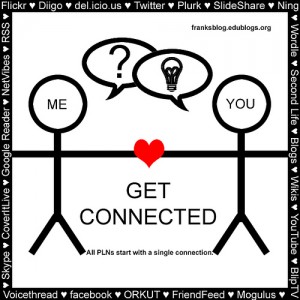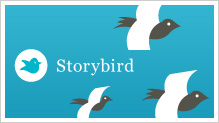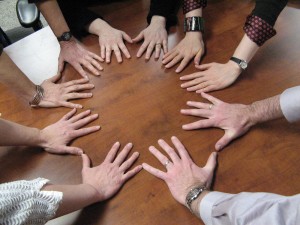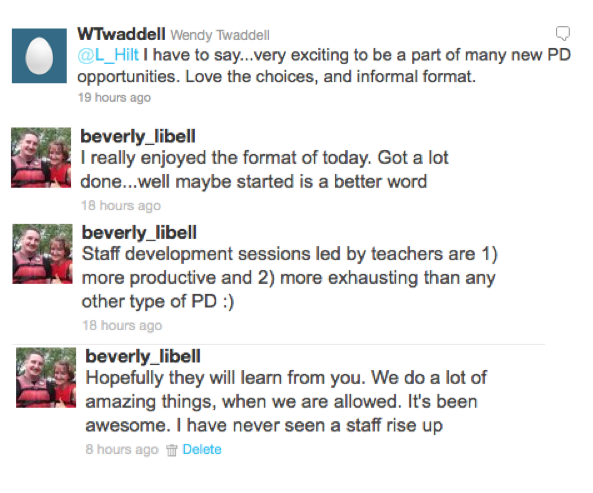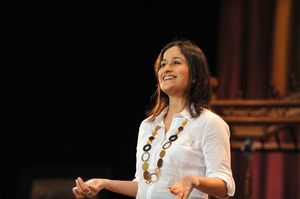Almost every time, my instinct begs me to respond, I don’t know. The formulation of a network is a personal experience. While one educator finds Diigo to be a fantastic way to compile and share resources, that format might not gel with someone else. The ultimate success of this process is determined by the individual finding tools, techniques, and timelines that work for him.
Here’s one harsh reality of “growing” your PLN: There’s a certain level of stick-with-it-ness required. You can’t sit back and let it happen to you. Effort In = Reward Out. I see many teachers and administrators join Twitter at a workshop. They tweet hello, watch the welcome tweets flow in, and then don’t revisit ever again. Why? There was no reward out, because there was no effort in. They didn’t tweet, they didn’t seek out others to follow, they didn’t try to understand the tool and what it offered them. They quickly dismiss it as a waste of their time, of which they have none to spare.
In the spirit of sharing, and in an attempt to help others reap the benefits of forming and maintaining a learning network, what follows is an explanation of how I came to be a connected principal and learner. (Also take note of the timeline. This does not happen overnight.)
I joined Twitter. February 2007. For reals, it was that long ago. Tweeted twice at the conference where I created the account. Found it to be an interesting slice of ridiculousness, but not something I would consider imperative to my professional growth. And that was the end of that. I didn’t use it again for two years.
I started a blog. September 2008. My first month as a principal. I intended to document each and every day of my principalship. Nope. I stopped blogging.
I started another blog. November 2009. I’ve always enjoyed writing, filling journal after journal in my youth. The reflective element of blogging appealed to me, so I started The Principal’s Posts, first hosted on Edublogs. I wrote about professional learning communities and other topics we were exploring in my school. From my first post: “I find value in blogging. I believe new principals can find relief, humor, and a sense of community knowing others are experiencing what they are experiencing.”Thus, the why.
#edchat. Fall 2009. I found myself gravitating back to the land of Twitter. I learned about Tweetdeck, but I can’t honestly say I remember how. And then, one Tuesday evening, I experienced my first #edchat. People from all across the globe were having a live, true, engaging conversation about a topic in education. I remember watching the tweets fly by, thinking, “We are talking to each other in 140 characters. This is cool.”
Transparency. Summer 2010. So at this point, I was pretty into the whole blogging/tweeting/sharing/connecting thing. But, I was hesitant to become transparent. I didn’t identify myself by full name or school on my blog. My Twitter profile didn’t provide any of those identifying features either. I was fearful my superintendents or teachers or parents would read my blog and not like what they saw. Then, in June, I attended the a “net gen” conference geared towards administrators. Will Richardon and Jason Ohler were the keynotes. In Will’s breakout session he asked if any audience members were currently on Twitter. I reluctantly raised my hand- not many were raised in the audience- and he projected my Twitter profile to introduce this tool to the group. Then he asked if we blogged. And there, on three giant screens, my transparency trepidation was eradicated. He shared my blog with the audience, praising the things I was doing; things I considered to be quite insignificant. “Look at her visitor map. People are visiting from all over the world to read her blog.” They were. Transparency.
Reading others’ blogs. I started developing close connections with many in my PLN- reading their blogs regularly, relating to their passions and being inspired by their work with kids. I started commenting. I saw more comments come my way. Relationships were forming, ideas were flowing… I could get used to this.
Tweeting, tweeting, and more tweeting. Share, share, and share some more.
Writing, writing, and more writing. In August of last year I had the privilege of connecting with the fine folks at Connected Principals. It’s hard for me to describe just how meaningful it’s been contributing to the blog, working with so many amazing administrators in many different capacities, and just having that group of supportive peers there to confide in, look to for advice, write with, present with… you are all incredible!
I became a PLPeep. I was privileged to take part in a Powerful Learning Practice cohort last year with four of my teachers. Led by Sheryl, Will, Robin, and Brian, we learned about the shifts in education, the necessary changes we as adult learners needed to make in order to best facilitate authentic learning experiences for our students, and our action research project brought us together as a team and yielded meaningful outcomes for students.
Meeting people. Face-to-face. EdcampNYC, Educon, EdcampBOS, ntcamp, TeachMeet, ISTE… so many wonderful memories, so many great friends, so much learned. These friendships wouldn’t exist without the digital connections that first brought us together, and a shared passion for educating kids. Someone tweeted as ISTE was ending, “It’s like the last day of summer camp, when you have to say goodbye to your friends.” My sentiments exactly. A transformation happens here. This is when you realize: this is a part of my life. Others have written about how professional and personal lines get blurred. You learn to rely on that support, and you want to be a better contributor, because your network gives so much to you, that you want to give back.
That’s all it takes. 🙂 A little time, reaching out to others, a lot of learning. Effort In = Reward Out.
I wanted this post to be practical in the sense that I am going to highlight some of the tools I use, including frequency, methods, and purpose for use. Take note that this is what works for me. They might not work for you. You might not care about my methods, and you won’t hurt my feelings if you stop reading. Or if you already did.
For creating:
WordPress – For writing my blog (hosted by Blue Host. I transitioned to a self-hosting domain last year after using Edublogs for quite some time. Appreciate having my unique URL). I blog as inspired. Also use WordPress for my school blog. I post as needed to keep our school community informed.
Blogger – We’re a Google Apps school, so I maintain a Blogger space to communicate with my teachers and also for a tech cohort group I facilitate. Update 3-4 times per week.
Wikispaces- I use our school wiki to share documents and FYIs for teachers to access throughout the year. Update as needed. I also maintain a wiki to house my resources from presentations and such.
PhotoPeach – To create simple slideshows to share on our school blog. As needed after school events.
Keynote – For presentations
iMovie– To create movies (school and life) I shoot mainly with this Flip. Love exporting directly to YouTube.
Pages – For all of my desktop publishing needs.
Evernote – For awhile, I did all of my list-making and drafting on here. If I’m at a conference, I will likely use this for note-taking.
Wunderlist– this is the note-taking app I prefer. Use it daily on my MBP, iPad, and iPhone.
iPhone camera apps I use: Instagram, PictureShow, PS Express, Photogram, Pixlromatic
For communicating & collaborating & connecting:
Twitter- every day, several times a day. On my phone and iPad: Twitter app. On my MBP: Tweetdeck. Tried Tweetdeck on the iPhone/iPad, hated it. Tried HootSuite on both, hated it more. I try to catch #edchat on Tuesday nights at 7 PM EST and #elemchat on Saturdays at 6 PM EST.
Google Calendar – My work and personal calendars are maintained on Google. My secretaries have access to my work calendar. I sync my Google calendar with my iCal account on my MBP/iPhone/iPad. Has been working smoothly. Access these daily.
Email – I use Gmail, Mac Mail, and my school webmail daily.
Slideshare to host presentations I want to share as needed; Scribd plays nicely with our school WordPress so I use that as well to share documents with parents online. As needed.
Google Docs– for collaborating on posts, presentations, etc. I draft a lot of my blog posts in a doc and then copy/paste into WP. I’m a Google Forms junkie. I use them for surveying staff following PD days and whenever I need survey data.
Skype – I’m l_hilt. Connect with me, many of my teachers are on board looking for connections for their classrooms!
Google+ – I will admit, I don’t love Google+. The intrigue of it all made me eager to start using, but I rarely check into that space more than once a week. It’s another thing. I need to find a way to streamline that and Twitter and Facebook. The hangout feature is nice. I’ve had some great conversations with other administrators and friends via hangouts.
Foursquare – Yeah, I check in there. Mary Beth tried to get me into Scvnger but, alas, I remain a I’m-at-Starbucks-now-and-I-want-you-all-to-know-about-it-Foursquare-girl.
Cloud App- I use this to easily share docs created on my MBP so I can access them on my work PC if needed.
For reading:
Browsers I use most often: Safari, Chrome (Mac); Firefox, Chrome (PC)
Google Reader– I have hundreds of feeds in my Reader. I name each one by the author and categorize by area in education. Read daily. (I use the Reeder App on my iPhone to read on the go and find it very easy to tweet from there.)
Flipboard- I enjoy reading my Google Reader feeds through Flipboard as well as my Twitter and Facebook feeds, Flickr photos, National Geographic magazines, USA Today, and more.
Zite- This has been one of my favorite finds recently thanks to Will Chamberlain. Zite takes my interests and turns them into my own personalized magazine. Many of my favorite blog feeds find their way into the stream, but I also appreciate that it pulls from other sources, thus broadening my reading experiences.
Kindle app – I have a Kindle account and read most of my Amazon purchases on the iPad.
StumbleUpon – A way to spend a colossal amount of time online discovering some of the most fascinating content on the web.
For curating:
Diigo and Delicious – to save bookmarks of interest; I recently rediscovered Delicious after being a Diigo-only girl for quite some time, but have found that some services bookmark straight to Delicious more fluidly than to Diigo (Zite being one of them). We have a Diigo group for our district admin, and I need to more fluidly share my lists with teachers. Working on that. Many of my teacher teams use it, which is great.
bit.ly sidebar – When this little tool came my way, it made my tweeting life much easier. Install this on your favorite browser, and watch the tweets fly. Use it on Safari, Firefox, and Chrome.
Posterous– to post snippets of my favorite blog posts, articles, etc. a few times weekly
Tumblr – to compile inspiring images and quick-links a few times weekly
Flickr – Great to share school photos. Save in sets. Also upload slides to share. Sprung for the Pro account because last year I ran out of space for my school photos!
Pinterest – I’m silly-obsessed with this visually-appealing site. Browse/pin a few times weekly. You can use a Pin It Button to help organize goodness you find whilst browsing.
Read it Later– I save a lot of links here. The tricky part is remembering to go and read them. Later.
The schtuff:
I use a 13’ Macbook Pro, school-issued Lenovo tablet, iPhone 4, and iPad (the old-school one :), Flip, and I have a Canon digital rebel Xti if those photos really need to look good.
Things I used at one point but stopped using:
Scoop.it – I liked the idea of it. Wasn’t very good with the follow-through.
Quora – just didn’t have time for it.
Pearltrees – I’m not going to lie, I never used this. But I did create an account and thought I’d like to use it.
Probably hundreds of other things I can’t recall at the moment.
I want to reiterate that this can’t happen without people. People with whom you build relationships. People who care enough to show you a new tool and how it works for them; to encourage you when your blog has no readers but who stress the importance of reflection. People who tweet your posts. People who comment. People who work within your school building or district and take interest in how you’re connecting, then reach out and try for themselves. People in your local school community with whom you meet regularly in face-to-face situations to discuss students and learning. Social media can certainly bring us together with great ease, but it takes effort to build and maintain the relationships that open our eyes to new possibilities and to keep us going.
So while it is a personal process, it is unwise – and not nearly as fun – to embark on this journey alone.
If you’re still reading, thank you. Please, in the comments, tell me where I can save some time/consolidate some efforts/use different apps/methods. I know there are many things out there that are working for my PLN, and I’d love to hear about your favorites! It’s a privilege learning with you all.





